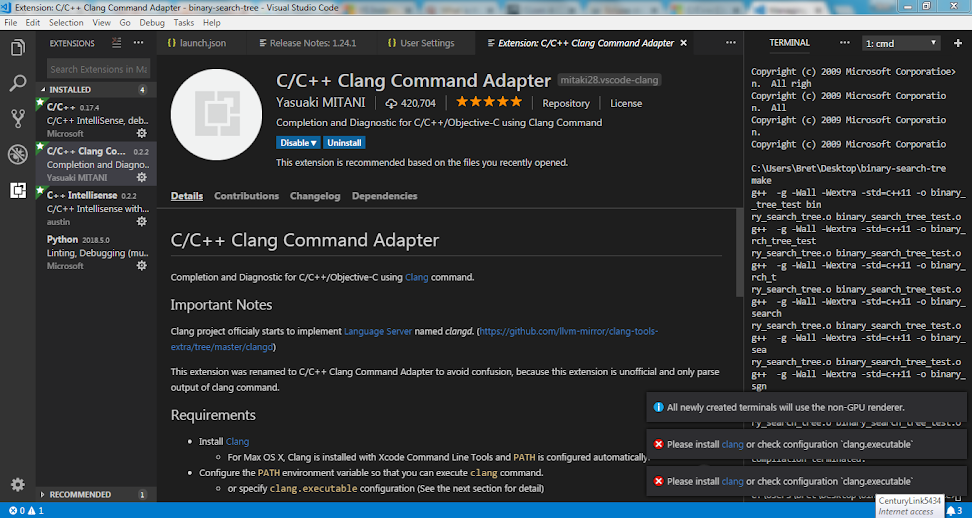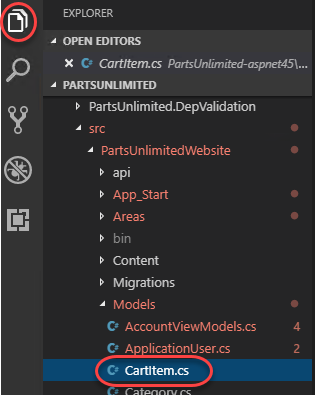Tutorial

While this tutorial has content that we believe is of great benefit to our community, we have not yet tested or edited it to ensure you have an error-free learning experience. It's on our list, and we're working on it! You can help us out by using the 'report an issue' button at the bottom of the tutorial.
Visual Studio Code is a code editor redefined and optimized for building and debugging modern web and cloud applications. Visual Studio Code is free and available on your favorite platform. — Familiarizing with the Source Control Tab. The first thing you need to do to take advantage of.
GitHub is simply a cloud-hosted Git management tool. Git is distributed version control, meaning the entire repo and history lives wherever you put it. People tend use GitHub though in their business or development workflow as a managed hosting solution for backups of their repositories.

For a GitHub repository, you would find the URL from the GitHub Code dialog. You would then paste that URL into the Git: Clone prompt. You'll also see the option to Clone from GitHub. Once you authenticate with your GitHub account in VS Code, you'll be able to search through repositories by name, and select any repo to clone it. GitHub - mbehr1/vsc-webshark: Visual Studio Code extension to open pcap / network capture files using wireshark/sharkd. How can multiple files be opened in Visual Studio Code (VSC)? For some reason, my copy of VS Code can only open one file at a time. For example if there are two files in the workspace folder, lets say an HTML and CSS file, both cannot be opened simultaneously.
It’s a convenient and mostly worry-free method for backing up all your code repos. It also allows you to very nicely navigate and view your code on the web. GitHub takes this even further by letting you connect with coworkers, friends, organizations, and more.

Prerequisites:
To initialize the repo and push it to GitHub you’ll need:
Step 1: Create a new GitHub Repo
Sign in to GitHub and create a new empty repo page. You can choose to either initialize a README or not. It doesn’t really matter because we’re just going to override everything in this remote repository anyways.
Through the rest of this tutorial we’ll assume your GitHub username is sammy and the repo you created is named my-new-project(So you’ll need to swap those out with your actual username and repo name when copy/pasting commands)
Step 2: Initialize Git in the project folder
From your terminal, run the following commands after navigating to folder you would like to add:
Initialize the Git Repo
Make sure you are in the root directory of the project you want to push to GitHub and run:

Note: if you already have an initialized Git repository, you can skip this command
This step creates a hidden .git directory in your project folder which the git software recognizes and uses to store all the metadata and version history for the project.
Add the files to Git index
The git add command is used to tell git which files to include in a commit, and the -A argument means “include all”.
Vs Github Extension
Commit Added Files
Vsc Github Free
The git commit command creates a new commit with all files that have been “added”. the -m 'Added my project' is the message that will be included alongside the commit, used for future reference to understand the commit.
Add new remote origin (in this case, GitHub)
Note: Don’t forget to replace the highlighted bits above with your username and repo name.
Vsc Github Download
In git, a “remote” refers to a remote version of the same repository, which is typically on a server somewhere (in this case GitHub.) “origin” is the default name git gives to a remote server (you can have multiple remotes) so git remote add origin is instructing git to add the URL of the default remote server for this repo.
Push to GitHub
With this, there are a few things to note. The -f flag stands for force. This will automatically overwrite everything in the remote directory. We’re only using it here to overwrite the README that GitHub automatically initialized. If you skipped that, the -f flag isn’t really necessary.
The -u flag sets the remote origin as the default. This lets you later easily just do git push and git pull without having to specifying an origin since we always want GitHub in this case.
All together
Conclusion
Now you are all set to track your code changes remotely in GitHub! As a next step here’s a complete guide to how to use git
Once you start collaborating with others on the project, you’ll want to know how to create a pull request.
